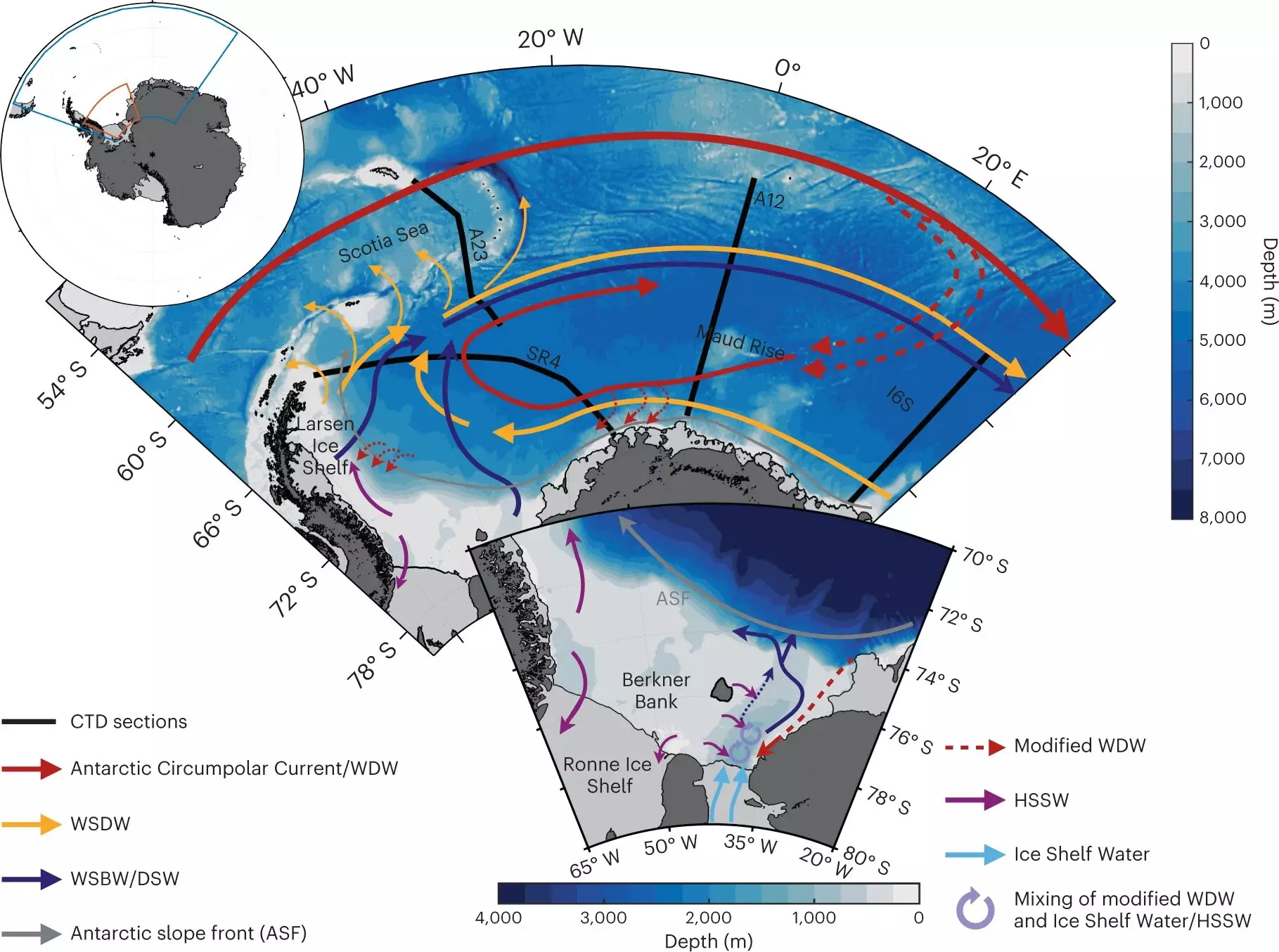New research, involving the University of Southampton and published in the journal Nature Climate Change, has shown that deep ocean water in Antarctica is warming and shrinking at an alarming rate, with significant consequences for the global climate and the world’s oceans. The study presents observational evidence from the Weddell Sea in Antarctica, demonstrating that these waters have shrunk by 20% over the past 30 years, while shallower waters warmed at a rate five times higher than the rest of the global ocean.
The Importance of Antarctic Bottom Water
Antarctic Bottom Water is the coldest, densest water mass on the planet, and it plays a crucial role in regulating the ocean’s ability to store heat and capture carbon. 90% of human-induced global heating and almost a third of the extra carbon released since the start of the industrial revolution has been absorbed by the ocean.
The Study’s Findings
Using ship-based observations and satellite data, the study discovered that these waters have been declining in volume over the past 30 years. The measurements are a result of numerous scientific voyages to the Weddell Sea, measuring the temperature and saltiness of the oceans from the surface to the seabed. The shrinking bottom waters are a result of a slowing sea ice formation. Normally, strong winds push newly formed ice away from the shelf, creating open areas for more ice to form. But weakening winds near the Filchner-Ronne ice shelf in the Southern Weddell Sea have reduced the size of these gaps in the sea ice cover, resulting in a slowdown in the formation of new ice. As new ice forms, it leaves behind salt, contributing to the creation of the cold and salty Antarctic Bottom Water. The shortage of these salty shelf waters has triggered the shrinking of bottom waters.
Consequences and Implications
The consequences of shrinking deep waters in Antarctica can be far-reaching, from reducing the ability of the ocean to absorb carbon associated with human activities to decreasing the oxygen supply to abyssal waters, affecting deep ecosystems. The study is the first observational evidence that long-term changes to the winds and sea ice are influencing bottom water production in the Weddell Sea, one of the largest producers of dense bottom water. The researchers uncovered an interplay between large-scale atmospheric patterns, connecting responses in the tropical Pacific to the Southern Ocean. Changes in these patterns have caused shifts in the winds across the Southern Ocean, resulting in reduced northerly winds across the Weddell Sea and, in turn, a reduction in sea ice formation. The changes are a consequence of natural variability in the system, although potentially stronger changes are predicted in the future.
The study shows how sensitive the Antarctic abyssal overturning circulation, which is a key regulator of global climate, is to the climate changes happening both remotely and locally. It highlights the complex interplay between atmosphere and sea ice that needs to be accurately represented in climate models to confidently predict how it may respond in the future. The findings come as other recent high-profile findings show similar reductions in bottom water coming from the Ross Sea, as well as modeled future collapse in bottom waters, both due to the accelerated melting of Antarctic ice shelves.


Leave a Reply